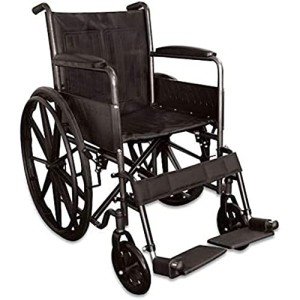Additional Wide Bariatric Wheelchair With 24" Seat
Frame
Wheelchairs are usually made in a standard width of 16" (narrow adult), 18" (standard adult) or 20" (wide grownup). Nevertheless, some wheelchair users need a seat width broader than these requirements. These additional large bariatric wheelchairs are normally fitted by an expert and based on the user's measurements.
In order to get the most comfy and safe trip for guests, it is very important that wheelchairs are correctly sized. This means that the wheelchair must have the ability to accommodate the user's size while having the ability to maneuver in tight areas. This is why BriteLift provides tailored automobiles to transport wheelchair travelers. This includes vans that can safely drive and steer big wheelchairs, allowing them to feel safe and comfortable in every trip. This is the only way to provide the most efficient transport for wheelchair travelers.
Seat

Bariatric wheelchairs are larger than basic wheelchairs and are designed to accommodate people who are heavier or wider. This extra wide bariatric wheelchair from Medline includes a 24" seat and a carbon steel frame with rust- and chip-resistant chrome plating. The wheelchair has tool-free push-button adjustable footrests and easy-to-clean vinyl upholstery. It can support up to 500 pounds.
When choosing the best wheelchair width, it is necessary to determine the user sitting typically on a flat surface area throughout their largest part of the lap which is usually their hips. It is likewise recommended that you use a yardstick instead of a determining tape as it tends to provide a more precise measurement. If the user will be wearing a winter coat then an extra 2" ought to be contributed to the measurement of their seat width.
Weight Capacity
A bariatric wheelchair is typically larger and heavier than basic wheelchairs. This is why they require more mindful maneuvering. Drivers need to be trained in handling these guests. Moreover, vehicles require to have enough room for these chairs along with ramps and wheelchair lifts. In have a peek at these guys , they require to understand how to schedule these rides in advance.
When deciding on the chair width, it is important to determine the user's best point in the seat, which is generally the hips. Many wheelchair manufacturers also offer a yardstick that can be used to assist with this measurement. When determining an individual's width, it is best to take the measurement straight throughout and not cover the tape around their hips which can offer a false reading.
Sometimes, the largest part of a person's thighs may be larger than their hips so this should be considered when choosing the chair width. In these circumstances, it is sometimes necessary to add an extra 2" to the chair width.
In basic, the weight capacity of a bariatric wheelchair must not be surpassed under any scenarios or serious injury may result. When using the chair, always be sure that it is on a stable and level surface with front casters pointing forward and wheel locks engaged. In addition, never lean or shift the center of gravity while sitting in the chair.
